Technologies
Apple Wants to Make the Apple Watch Your ‘Key to the World’
Apple’s vice president of technology, Kevin Lynch, speaks with CNET about WatchOS 10 and the company’s approach to new Apple Watch features.
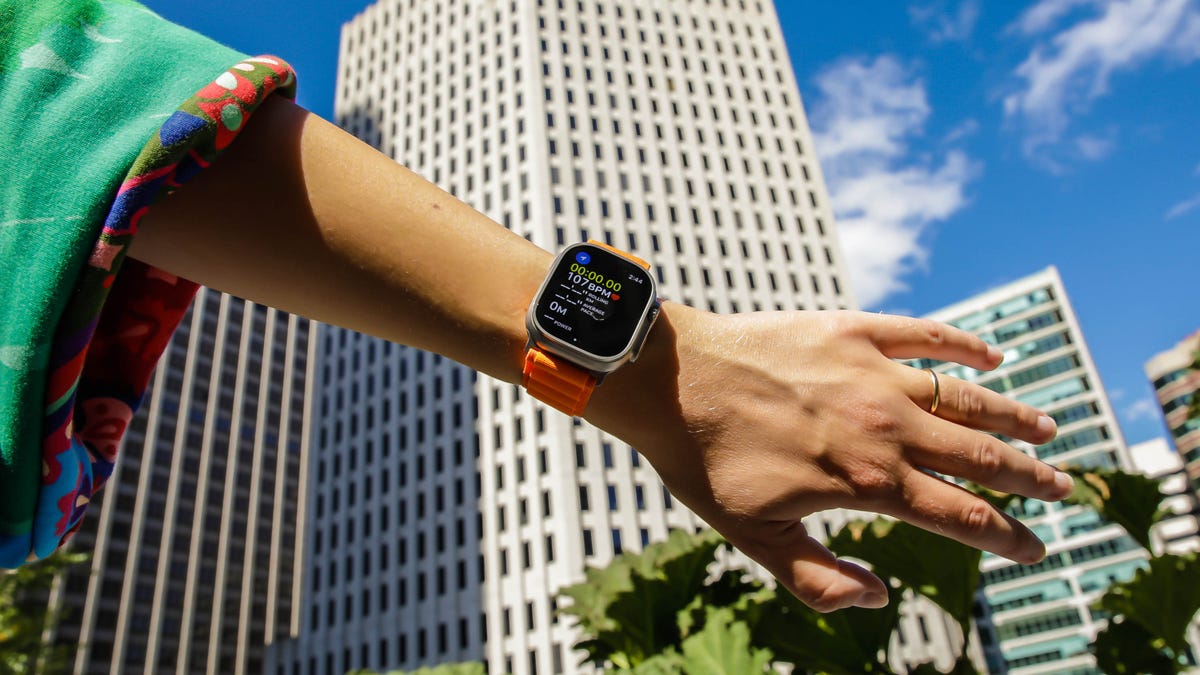
Apple CEO Tim Cook said that the tech giant’s greatest contribution to mankind will be about health when he spoke with CNBC in 2019. The Apple Watch, with its ability to measure all sorts of bodily markers, may be the biggest contributor to that mission yet. But Apple also has another important purpose in mind for its nearly decade-old smartwatch: acting as your «key to the world.»
That’s according to Kevin Lynch, Apple’s vice president of technology, who recently sat down for a virtual interview with CNET. This direction isn’t new; Apple has been gradually extending the Apple Watch’s functionality over the years, enabling it to work as a digital key for your car and home. In fact, that goal was part of the Apple Watch from the beginning through the original model’s support for Apple Pay.
But this theme feels more prevalent than ever in WatchOS 10, the upcoming software update launching in the fall and arriving in public beta next month. The new software introduces updated widgets to help the watch surface information as needed, perhaps a testament to just how much we’re doing on these tiny wrist-worn devices today. The goal is to provide a lot of data at a glance while maintaining the watch face aesthetic, Lynch said.
«This has been a journey for us over a number of years as we really found the best path and the richest way to balance these things,» Lynch said.
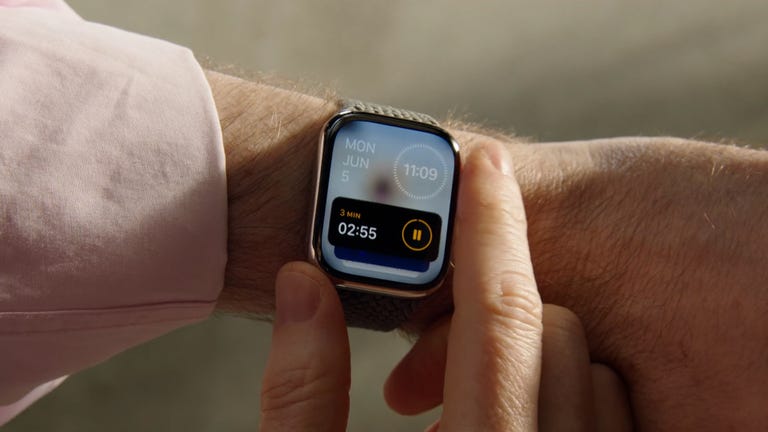
04:44
WatchOS 10 widgets could make the Apple Watch easier to use
The Apple Watch has gained many new features and functionality since its 2015 debut, especially when it comes to health. But the general interface has largely remained the same.
That’s about to change in WatchOS 10 with the introduction of widgets, or informational cards that are accessible from the watch face with a twist of the digital crown. You’ll be able to add widgets for viewing the weather forecast, reminders and news headlines among other tidbits, similar to the iPhone. This should mean significantly less tapping and swiping would be required to set a timer or view your next meeting.
The order of these cards will contextually change depending on factors like the time of day similar to the iPhone’s widgets, which Apple calls the «smart stack.» The idea is to show the right data as you need it throughout the day. For example, the weather might appear first in the morning, while a medication reminder may surface at night.
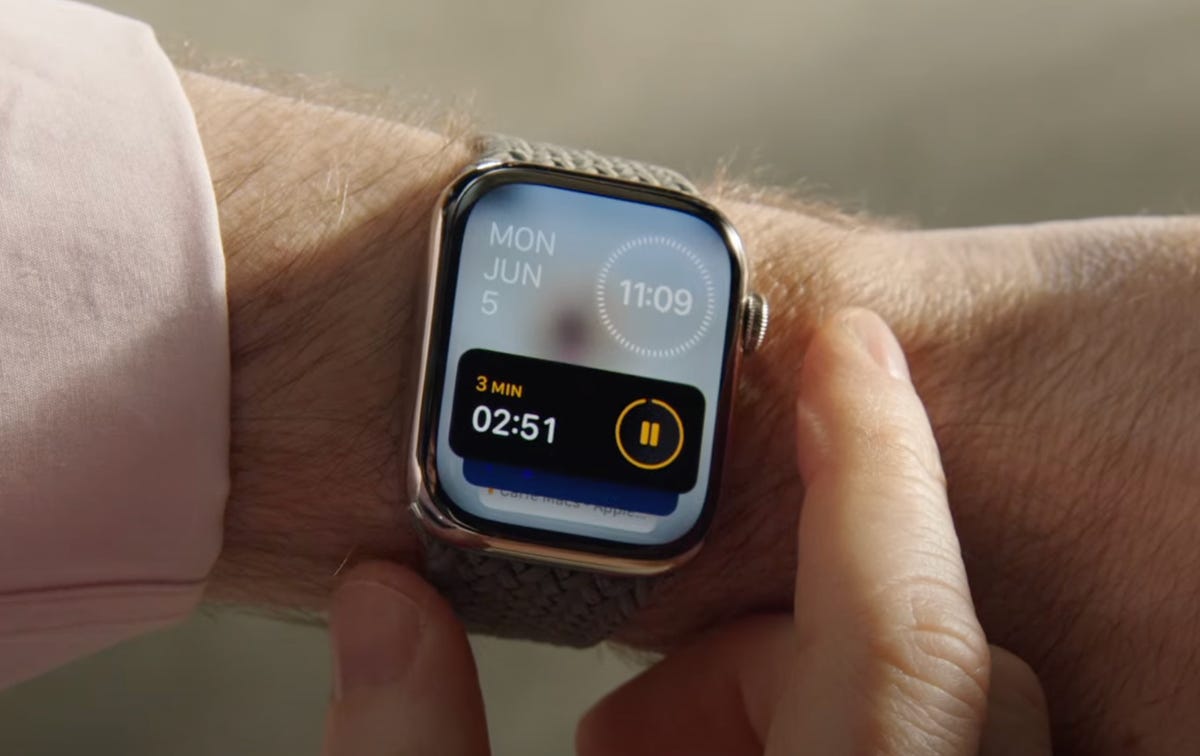
The timer widget in WatchOS 10.
It might sound like a small update, yet it’s one that could make the Apple Watch better at serving up relevant information with minimal effort. When the first Apple Watch arrived eight years ago, some reviewers criticized the device’s software as being too complicated and complex.
Those concerns have seemingly faded away as the Apple Watch became more prevalent. According to Counterpoint Research, Apple accounted for 26% of the global smartwatch market as of the first quarter of 2023, more than any other company. But the arrival of these new widgets, along with other updates like redesigned apps and a shortcut that launches the Control Center menu with the side button, show that there’s still work to be done when it comes to making the Apple Watch more intuitive.
Apple’s intention to have your Apple Watch unlock the world around you has been evident for a while; it announced the ability for the watch to double as a key to your office, home or hotel in 2021, for example. That raises the question of why Apple waited until 2023 to update the interface in a way that makes relevant information more easily accessible.
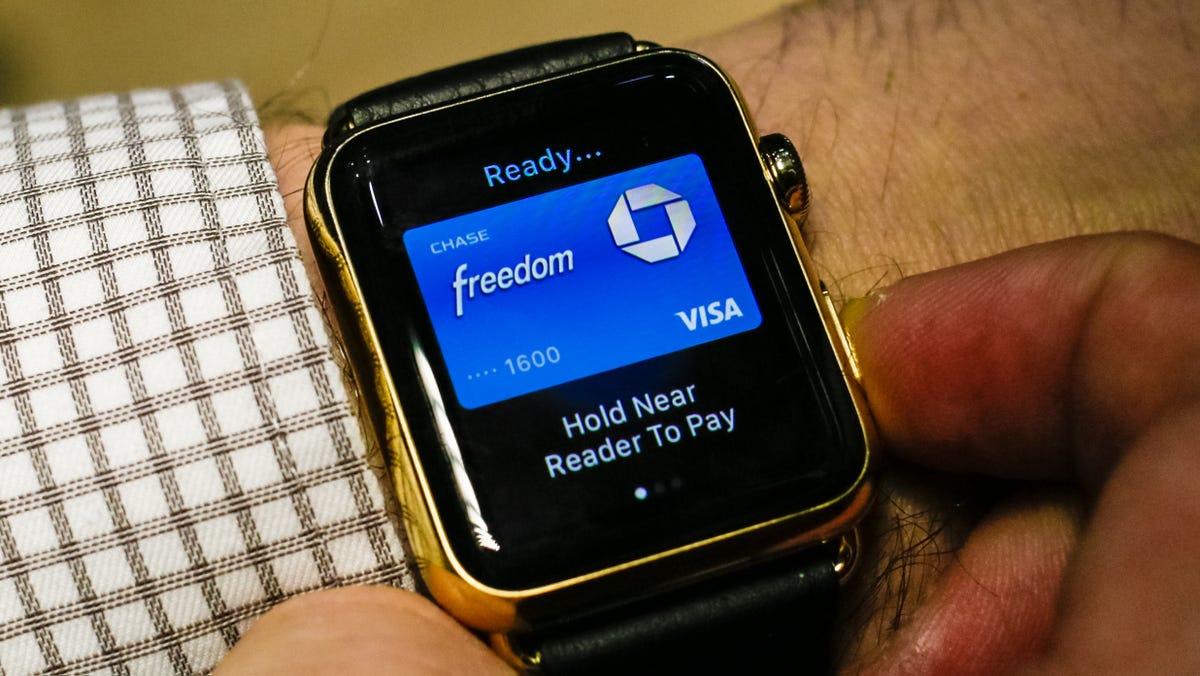
Apple Pay was available even on the first Apple Watch.
Lynch said it comes down to a combination of user feedback and hardware improvements that enable the machine learning that’s necessary to power the smart stack. The company also didn’t want to change the Apple Watch’s user interface too often or in a way that would feel jarring.
«It was informed by all of our experiences that we’ve had over time, of course, about how people interact with the watch,» he said.
Apple’s approach to new features is about hardware and software
Many of the Apple Watch’s major changes come down to how the software and hardware work together. That’s especially true for the Apple Watch’s health tracking functionality, which also gets an upgrade in WatchOS 10. There are new metrics for cyclists and additional features like topographic maps in Apple Maps for hikers, a mood-logging tool and the ability to detect time spent in daylight.
In some ways, Apple takes a different approach than its competitors when it comes to how health data from the watch’s sensors is used and presented throughout the interface. Rivals like Oura and Google’s Fitbit, for example, crunch certain readings to generate a «readiness score,» which communicates whether your body is ready for a tough workout or in need of a rest day.
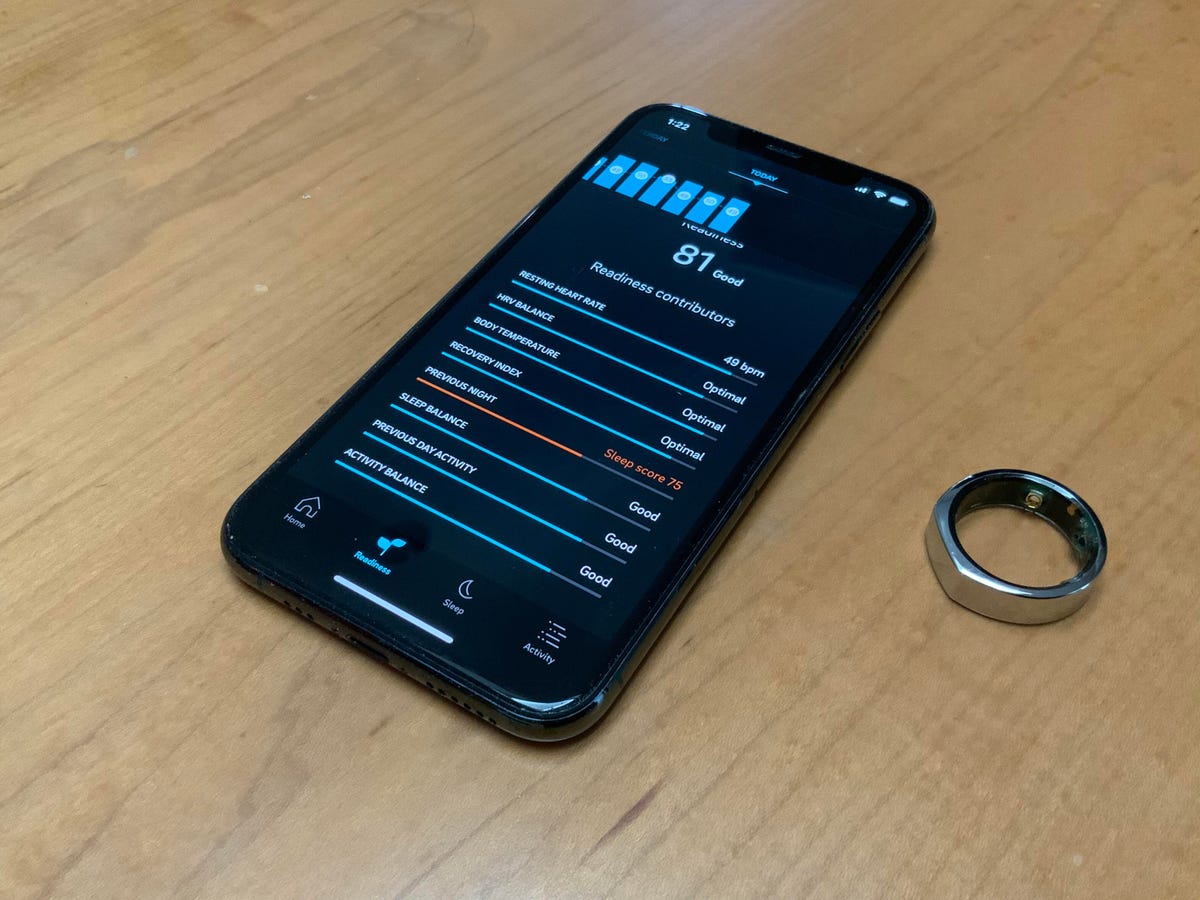
The Oura app’s daily Readiness score, a combination of multiple measurements.
The Apple Watch lacks an equivalent feature in WatchOS 10, and that’s intentional. When asked about whether Apple envisions recovery-related insights like a readiness score for the Apple Watch, Lynch pointed to the company’s approach for developing new features. He said Apple’s strategy focuses on solving broad problems that impact a wide range of people, adding that the company is «optimistic» about getting new health insights from the watch’s existing sensors.
«We actually look at a combination of what we can sense and what are the top health challenges that people have in the world,» he said. «And what’s the intersection of what we can sense, and what are those issues?»
That doesn’t mean Apple will never offer a readiness score-like feature, said Deirdre Caldbeck, director of Apple Watch product marketing, who also spoke with CNET. It’s just that the company focuses its resources on features that it thinks will be universally impactful and offer actionable insights.
«In our discussions and our debates and our decision making, we do try to keep those things in mind because of course Apple Watch is so broadly applicable to so many people,» Caldbeck said.
It’s not just about the insight Apple can provide, but also how that data is presented. Lynch described the Apple Watch as a «supportive partner» that applauds your achievements but doesn’t shame you for missing your stand reminder. Oura takes a similar approach; the company previously told CNET it tries to communicate «truth» and «positivity» in its notifications. Even the nudge you feel on your wrist and the ping you hear when receiving a notification on your Apple Watch was meticulously planned.
«We designed those by actually ringing the material of the Apple Watch case with a little hammer,» Lynch said. «And we recorded the ‘ding’ noise it made so it sounds like the watch itself is being rung.»
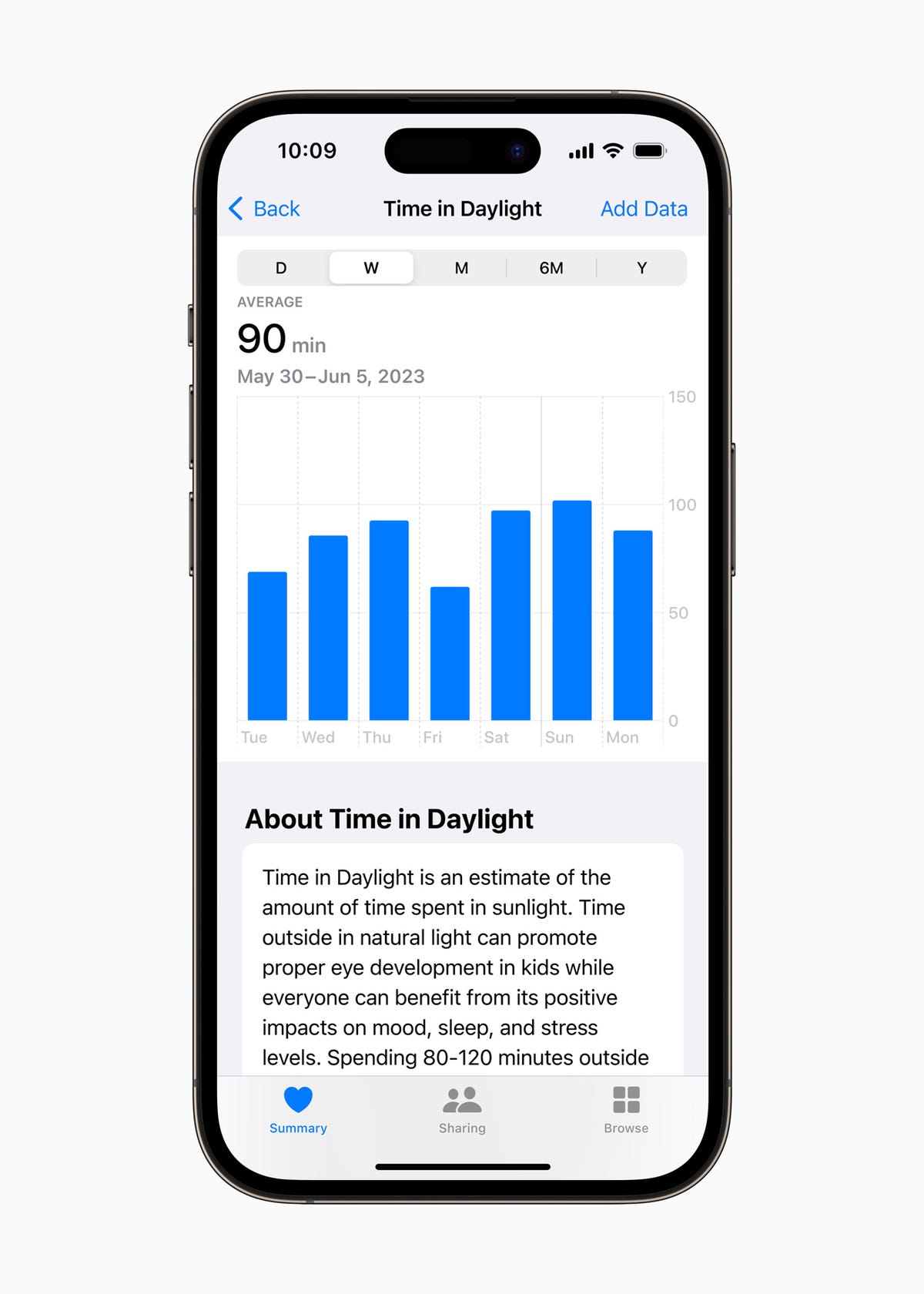
A screenshot of the daylight detection feature coming in WatchOS 10.
But one example of how Apple is leveraging the watch’s sensors in a new way in WatchOS 10 is in the new daylight detection feature. It uses the Apple Watch’s ambient light sensor, along with input from other sensors to determine whether a person is outdoors, Lynch said. Apple is positioning this as a way to help younger users potentially prevent myopia, or nearsightedness, since the Myopia Institute says time spent outdoors can reduce the development of the condition in children.
Apple had been researching eye health and realized the Apple Watch’s ambient light sensor to help figure out whether someone is outside, Lynch said.
«We start with storytelling,» Lynch said. «We start with, ‘Here’s a problem in the world, and let’s tell each other a story around maybe how the world could be different.’ That leads us then to designing and engineering and all that stuff.»
The Apple Watch’s competition and what’s next
As the Apple Watch has evolved and gained new sensors, it’s become increasingly focused on health. But it’s also a big part of Apple’s effort to free us from screens, an objective that the company reiterated when introducing its Vision Pro headset earlier this month.
Apple seems to be succeeding at that goal so far, considering the company’s wearables business is now the size of a Fortune 150 company. Yet the competition is growing; Google entered the smartwatch space with its Pixel Watch last year, and Google and Samsung joined forces in 2021 to redesign the software that powers Android smartwatches. Samsung’s next smartwatches are expected to debut next month, complete with new software that makes sleep statistics and other health insights more prominent.
Apple calls WatchOS 10 a «milestone» for the Apple Watch. That may be telling of the smartwatch’s role in our lives at a time when we’re surrounded by an increasing number of screens and sensors. American households owned an average of 16 connected devices as of 2022, according to research firm Parks Associates.
Perhaps now more than ever, there’s a need for gadgets like the Apple Watch to help us navigate and manage those devices. WatchOS 10, with its contextual widgets, redesigned apps and ability to swap contact data with iPhones through a new feature called NameDrop, seems like an attempt to do just that.
Lynch couldn’t say what’s next when asked about other ways the Apple Watch could become a so-called key to the world around you.
But the clue could be sitting in our pockets.
«What do you use a wallet for today, and do you still have things in your wallet?» he asked. «So that would be another area to think about in terms of maybe over time, how we can reduce the amount of stuff you have to carry around with you.»
Technologies
Today’s NYT Connections: Sports Edition Hints and Answers for Aug. 21, #332
Here are hints and the answers for the NYT Connections: Sports Edition puzzle for Aug. 21, No. 332.
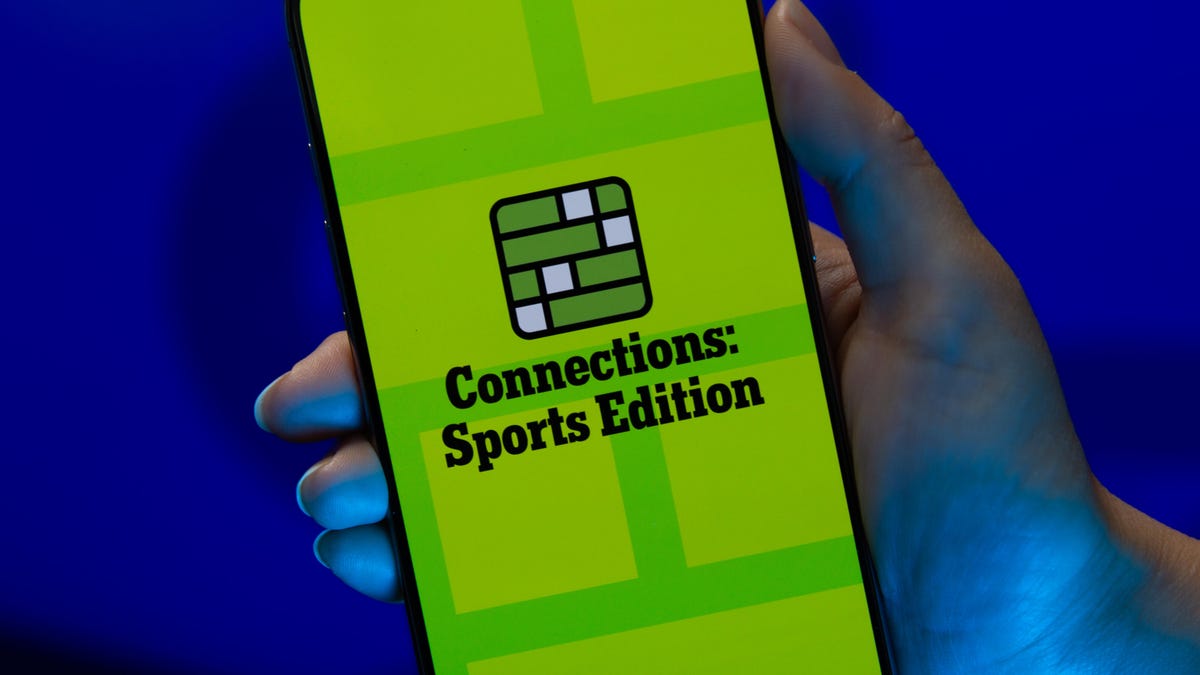
Looking for the most recent regular Connections answers? Click here for today’s Connections hints, as well as our daily answers and hints for The New York Times Mini Crossword, Wordle and Strands puzzles.
To solve today’s Connections: Sports Edition, focus on the endings of some of the words. That should help you see how they connect. Read on for hints and the answers.
Connections: Sports Edition is out of beta after making its debut on Super Bowl Sunday on Feb. 9. That’s a sign that the game has earned enough loyal players that The Athletic, the subscription-based sports journalism site owned by the Times, will continue to publish it. It doesn’t show up in the NYT Games app but now appears in The Athletic’s own app. Or you can continue to play it free online.
Read more: NYT Connections: Sports Edition Puzzle Comes Out of Beta
Hints for today’s Connections: Sports Edition groups
Here are four hints for the groupings in today’s Connections: Sports Edition puzzle, ranked from the easiest yellow group to the tough (and sometimes bizarre) purple group.
Yellow group hint: What you want to do.
Green group hint: Football abbreviations.
Blue group hint: Home to hoops.
Purple group hint: Hidden hockey team names.
Answers for today’s Connections: Sports Edition groups
Yellow group: Objective.
Green group: NFL teams, on scoreboards.
Blue group: NBA arenas ending with «Center.»
Purple group: Ends with an NHL team.
Read more: Wordle Cheat Sheet: Here Are the Most Popular Letters Used in English Words
What are today’s Connections: Sports Edition answers?
The yellow words in today’s Connections
The theme is objective. The four answers are aim, goal, mark and target.
The green words in today’s Connections
The theme is NFL teams, on scoreboards. The four answers are CHI, MIA, MIN and NO. (Chicago, Miami, Minnesota and New Orleans.)
The blue words in today’s Connections
The theme is NBA arenas ending with «Center.» The four answers are Barclays, Chase, Delta and Kia.
The purple words in today’s Connections
The theme is ends with an NHL team. The four answers are geoducks, spoilers, superstars and Vikings. (Ducks, Oilers, Stars and Kings.)
Technologies
Made by Google 2025: Everything Announced — Pixel 10, Pixel Watch 4, Pixel 10 Pro Fold
At a star-studded event hosted by late-night host Jimmy Fallon, Google announced new phones, watches, earbuds and Android features.
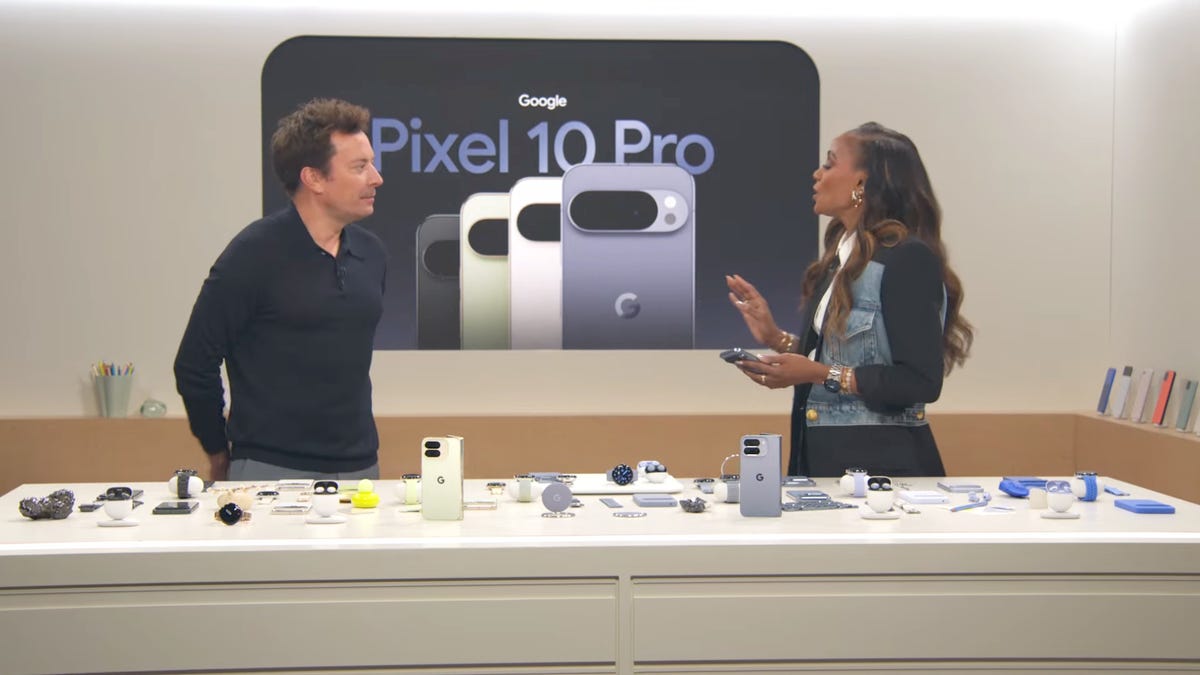
Even though the Pixel 10 leaks and rumors felt as if they arrived in a steady firehose before today’s Made by Google event — compelling the company to release a teaser video pre-announcing the new phone’s existence a month ago — Google still delivered details it somehow managed to keep private until it was ready to share.
And that delivery was refreshingly fun for a tech event. The Tonight Show host Jimmy Kimmel led the proceedings in a very late-night talk show format, bringing on several special guests from media, sports and yes, Google’s own experts to show off the products and features they’ve been working on for today’s announcements.
Pixel 10, Pixel 10 Pro and Pixel 10 Pro XL are real
Surprise, Google announced new phones! OK, this was the least surprising part of the event, but it still feels good to finally know what exists and when it’s coming. Preorders for the Pixel 10, Pixel 10 Pro and Pixel 10 Pro XL begin today and will be in stores and shipping starting August 28.
-
I’m Stoked That Google Made the Pixel 10 a $799 Value-Packed Feature Monster
-
I Tested Google’s Pixel 10 Pro XL in Paris, and I’m Impressed
-
Pixel 10 Pro and Pro XL First Look: Familiar Design, New AI Tricks
-
Google Launches the Full Pixel 10 Line, Including the Pixel 10 Pro and Pixel 10 Pro XL
Pixel 10 Pro Fold opens the next chapter of foldables
Folding phones so far have shared an Achilles Hinge: small particulates like sand can get inside the case and really mess things up. The Pixel 10 Pro Fold is one of the first to have an IP68 rating for dust and water resistance, meaning you can take it to the beach.
-
Pixel 10 Pro Fold Is Tougher, Smarter and Totally Dust Resistant
-
Forget the Pixel 10 Pro Fold. Foldables Should Look Like the Microsoft Surface Duo
-
Google’ Pixel 10 Pro Fold Is Here
Pixel Watch 4 talks to Gemini and is your new health coach
The Pixel Watch 4 includes new fitness options like real-time guidance while exercising. And if you forgot to start a workout, the watch (with AI help) can detect the activity in the background and remind you of it later, giving you credit for the effort you made. It’s also the only smartwatch that can detect a loss of pulse and call emergency services automatically.
-
Well Played, Google: The Pixel Watch 4 May Give Apple Watch Loyalists a Wandering Eye
-
Pixel Watch 4 First Look: Google Just Raised the Bar
-
The Pixel Watch 4 Is Here. Can It Finally Beat Apple?
Pixel Buds 2a are more affordable earbuds
Joining the Pixel Buds 2 Pro in the market are Pixel Buds 2a, an affordable ($130) pair of wireless earbuds that feature active noise cancellation, a smaller and lighter for all, and a twist-to-adjust stabilizer feature for setting a comfortable fit.
-
Google’s New Pixel Buds 2A Look a Lot Like the Pro 2, but Cost Way Less
-
Meet the Pixel Buds 2A: Google’s Budget Answer for ANC Buds
Pixel Buds Pro 2 owners will see new features
Coming in a software update next month, Pixel Buds Pro 2 owners will be able to answer calls or send them to voicemail with a nod or shake of the head. You’ll be able to talk to Gemini live in noisy locations, and benefit from adaptive audio that applies noise cancellation while letting important sounds come through. At the other end, a new feature will protect your hearing from very loud sounds.
Magic Cue is a Gemini assistant that pulls data from your correspondence
In the rollout of all the various AI technologies in the industry, the current stretch goal is «agentic» interactions with software: Having an AI that knows all sorts of details about you and can act to get the important stuff in front of you when needed. (And do it in a privacy-first way, one would hope.)
Magic Cue is Google’s implementation. It’s a new Gemini-based feature that can look through your earlier messages, emails and photos to pull details about things like restaurant reservations and flight times. Magic Cue runs on the Pixel device itself, so sensitive data stays private and not shared to the cloud.
A lot of Gemini AI intelligence is still coming soon
At the start of the event, Kimmell sat down in typical talk-show format with Rick Osterloh, senior vice president of platforms and devices, to chat about Gemini and the marvels of AI. Aside from Magic Cue, which will be shipping on the Pixel 10 phones, a lot of the features we’ve been hearing about are still on the horizon.
«For instance, Gemini could do something like plan a team celebration dinner for 12 people tonight,» he said. «It might go find a restaurant that’ll accommodate that group…. Look for a karoake place nearby and maybe even order custom T-shirts for the celebration.»
And when will that be possible? Kimmell asked. «A lot sooner than people think,» Osterloh replied. «This kind of thing is coming this year.»
The Pixel 10 Pro and 10 Pro XL can zoom to 100x with AI help
Pro Res Zoom on the Pixel 10 Pro phones pushes zooming far beyond what would seem to be possible with typical small cameras. Usually when you zoom beyond the optical limits of the cameras, details get fuzzy as the software upscales the image. With Pro Res Zoom, when you go beyond 30x zoom, it uses generative AI to build a sharper version. CNET’s Andrew Lanxon got both impressive and head-scratching results while making photos in Paris using the Pixel 10 Pro XL.
Camera Coach uses AI to encourage better photos
Smartphone cameras have employed AI for several years, such as identifying subjects in order to blur the background for Portrait modes or quickly snapping several shots at multiple exposures and blending them together to create well-balanced lighting throughout. Now Google is using AI to help you take better photos.
Camera Coach is a new feature in the Pixel Camera app that looks at the scene in front of the lens and generates multiple suggestions for how to improve the photo before it’s captured. To show this off, podcaster Alex Cooper brought Fallon out to be her model and sat him down on a couch. When she activated the feature, Camera Coach suggested that she move the camera closer to the subject, position his head in the upper portion of the frame, lower the camera to eye level and turn on Portrait mode.
«To all the girls that are watching, I personally know how hard it is to train your boyfriend or your husband to get that perfect shot,» said Cooper. «And now Camera Coach can just train all the boys for us.»
Pixel 10 supports Qi2 magnetic charging
The Qi2 spec includes not just faster charging but also an array of magnets on the back for connecting to accessories. Sound familiar? The presenters mentioned Apple’s MagSafe system, then paused with the realization that they probably shouldn’t have name-checked it during the Google event. On the Pixel 10 phones, it’s called Pixelsnap and should work with accessories made for Apple’s ecosystem too.
Pixel 10 will be available in Mexico
In an impressive segment demonstrating Gemini live translation during a phone call, musician Karen Polinesia, who speaks Spanish, announced that for the first time, the Pixel 10 will be available for sale in Mexico.
This article is being updated; stay tuned for more.
Technologies
Upgrading to Pixel 10? Here’s How to Prepare Your Old Pixel for Trade-In
Don’t send off your phone with a ton of personal information still on it.
Google just announced the Pixel 10 family, and several preorder offers are available right now. If you’re looking for an even better deal on these new phones, you might want to consider trading in your old Pixel for maximum savings.
The Pixel 10 family consists of the base Pixel 10 model, two Pro models and the latest Pro Fold. All of these phones feature the latest Tensor G5 Processor, Qi2 wireless charging and, of course, new AI tricks. We went hands-on with the new phones, and they made a good impression.
If you’re ready to leap into a new Pixel, you’ll want to make sure you’ve prepared your old phone properly before you send it off.
If you don’t check all the right boxes for trading in your phone, its trade-in value could be reduced. You also want to avoid sending your phone out with a ton of personal information still left on it.
Below, we’ll go over the steps to ensure a seamless trade-in experience when your new Pixel 10 arrives.
For more, we’ve wrangled all of the best Pixel 10 cases you can buy right now.
Turn off the activation lock on your Pixel phone
Before you trade in your phone, you’ll just need a factory reset to qualify for the maximum trade-in value. Some retailers want you to remove the activation lock from your phone first, which requires removing the device from your Google account before resetting it. (AT&T took off over $400 of the value because I didn’t do this to my Pixel 7 Pro when I upgraded to the 8 Pro a few years back.)
You can remove your Google account from your phone directly or via your online account.
From your Pixel settings
You can remove the activation lock right from your Pixel phone. H:
- On your phone, navigate to Settings.
- Tap Passwords & accounts.
- Tap your Google account.
- Tap Remove account.
Repeat this process for any additional accounts you need to remove.
From the web
Alternatively, you can head to your online Google account web page and handle the removal from there.
- From a web browser, navigate to your Google account.
- Select Security on the left sidebar.
- Locate the Your devices box, and select Manage all devices.
- Select the device you’re trading in.
- Select Sign out.
Factory reset your Pixel
With the activation lock removed, you’re now free to factory reset your device as you normally would.
- On your Pixel, navigate to Settings.
- Tap System.
- Tap Reset options.
- Tap Erase all data (factory reset).
That’s it. Now you’re ready to send in your trade-in without any hiccups that could drop the value you get for your phone.
For more, check out a closer look at the Pixel 10 Pro XL’s camera performance.
-

 Technologies3 года ago
Technologies3 года agoTech Companies Need to Be Held Accountable for Security, Experts Say
-

 Technologies2 года ago
Technologies2 года agoBest Handheld Game Console in 2023
-

 Technologies2 года ago
Technologies2 года agoTighten Up Your VR Game With the Best Head Straps for Quest 2
-

 Technologies4 года ago
Technologies4 года agoVerum, Wickr and Threema: next generation secured messengers
-

 Technologies4 года ago
Technologies4 года agoGoogle to require vaccinations as Silicon Valley rethinks return-to-office policies
-

 Technologies4 года ago
Technologies4 года agoBlack Friday 2021: The best deals on TVs, headphones, kitchenware, and more
-

 Technologies4 года ago
Technologies4 года agoOlivia Harlan Dekker for Verum Messenger
-

 Technologies4 года ago
Technologies4 года agoiPhone 13 event: How to watch Apple’s big announcement tomorrow
